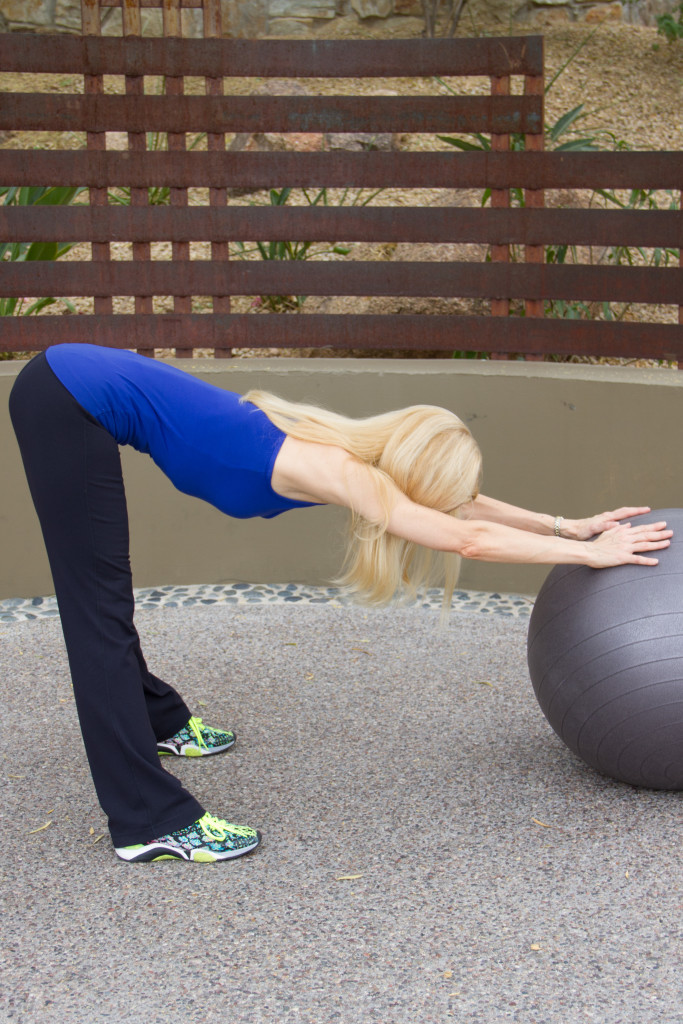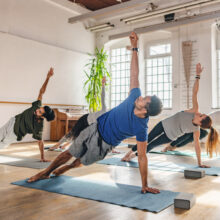Workout Series: How to Build Strength and Stretch With a Stability Ball
- Published: Wednesday, April 20th 2016
- in Fitness
Personal trainers learn to incorporate opposing muscle groups when building a fitness program for their clients. Muscles were created to work in pairs — they pull, not push. When we do bicep curls, our muscles contract, or pull, while the triceps lengthen, or stretch. This concept is reflected within fitness disciplines designed to build strength and flexibility together; this approach helps reduce injury risks and aids blood flow, thus delivering nutrients to the muscles. Utilizing a stability ball is an effective way to achieve this exercise balance. Using a round prop, such as a fit ball, assists in further activating proprioceptors — the sensory receptors on nerve endings in the limbs, inner ear, muscles, tendons, and joints. Proprioceptors send signals in the body that allow us to multitask while challenging spacial awareness (where you are in space) and balance. Movement in exercise challenges proprioception when using different props. When stretching, using the ball allows us to activate deeper, intrinsic muscles.
I’ve broken down a series of stability ball combinations and what they target. Each week, we’ll highlight a new combination. We’ll give you a week to get acquainted with the ball and the movements before introducing the next few sets.
How to buy the right ball: The size of the fit ball should be between 55 and 65 centimeters, depending on a person’s height. For someone under 5 feet, 45 centimeters would be ideal. When purchasing the ball, try and sit on it: Your knees should be at a 90-degree bend, or slightly less. If the knees are beyond a 90-degree bend and you are sinking low, the ball is too small.
Movement One: Ball squat and standing back, glutes, and hamstrings stretch.
What it does: Strengthens the quads, hamstrings, glutes, arms, and back.
How to do it: Standing with your feet slightly wider than hip distance and your toes facing forward, hold a 45-55 cm. stability ball in your palms. Inhale through the nose and squat down. Make sure the knees track above the big toe and do not pass 90 degrees. Lift ball up above your head with your shoulders stabilized. Exhale on the rise, pushing from the glutes. Repeat this squat 12 times.
 Movement Two: Forward fold extension with ball stretch.
Movement Two: Forward fold extension with ball stretch.
What it does: Stretches the arms, shoulders, back, glutes and hamstrings.
How to do it: With the ball on the floor, bend over from your hips and extend your palms onto the ball, lengthening through your arms. Hold this stretch for 3-5 slow counts, inhaling and exhaling slowly. Release the stretch and repeat.




